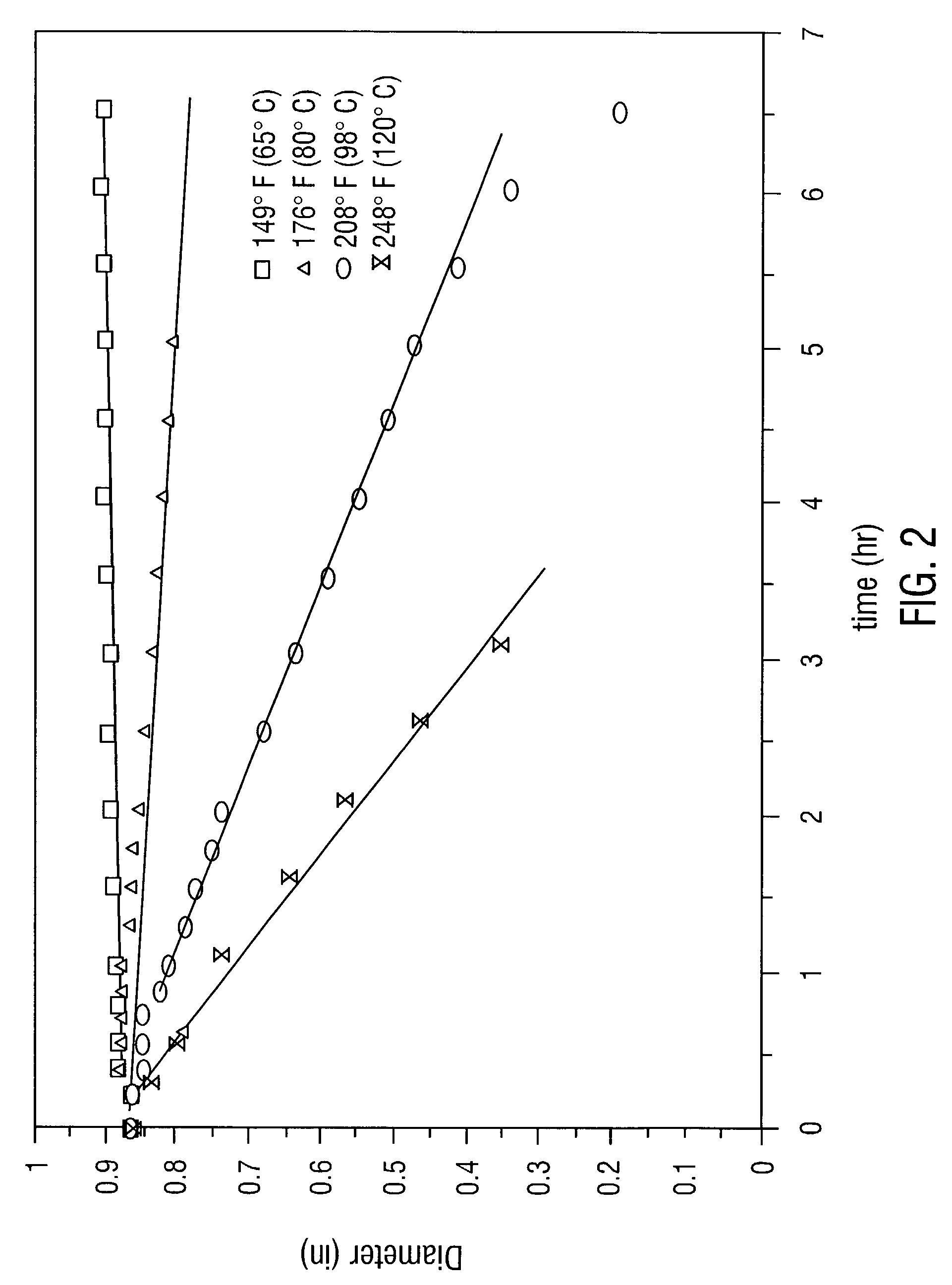Downhole chemical delivery system for oil and gas wells
- Summary
- Abstract
- Description
- Claims
- Application Information
AI Technical Summary
Benefits of technology
Problems solved by technology
Method used
Image
Examples
example 1
[0063]The material composition used is a polyvinyl alcohol copolymer under the trade name of BioBalls MR™ made from the hydrolysis of polyvinyl acetate. The molecular weight is 400,000 to 800,000 daltons and there is about 88% hydrolysis of the polyvinyl acetate. The copolymer has been formed into solid spheres of diameter less than one inch. FIG. 1 shows that as the temperature is increased, the solubility of the copolymer increases. Three different temperatures are shown to illustrate the effect of each temperature on the copolymer spheres.
example 2
[0064]The material composition is a polyvinyl alcohol copolymer under the trade name of BioBalls HR™ made from the hydrolysis of polyvinyl acetate. The molecular weight is 400,000 to 800,000 daltons and there is about 95% hydrolysis of the polyvinyl acetate. The copolymer has been formed into solid spheres of diameter less than one inch. As the temperature is increased above 80° C., the polymer begins to dissolve. One of skill in the art will appreciate that solubility of the copolymer increases only after a certain temperature is reached. FIG. 2 shows the dissolution rates at 98° C. and 120° C.
[0065]In each of the above examples the material can be used to encapsulate a chemical that is required downhole. With a hollow spherical shape the inside could be filled with the chemical. The chemical may be admixed into the copolymer and then formed into a spherical or other desirable shapes.
[0066]To protect the shell until use, a wax or other type of coating could be used to line the insi...
PUM
| Property | Measurement | Unit |
|---|---|---|
| Time | aaaaa | aaaaa |
| Time | aaaaa | aaaaa |
| Thickness | aaaaa | aaaaa |
Abstract
Description
Claims
Application Information
 Login to View More
Login to View More - R&D
- Intellectual Property
- Life Sciences
- Materials
- Tech Scout
- Unparalleled Data Quality
- Higher Quality Content
- 60% Fewer Hallucinations
Browse by: Latest US Patents, China's latest patents, Technical Efficacy Thesaurus, Application Domain, Technology Topic, Popular Technical Reports.
© 2025 PatSnap. All rights reserved.Legal|Privacy policy|Modern Slavery Act Transparency Statement|Sitemap|About US| Contact US: help@patsnap.com



